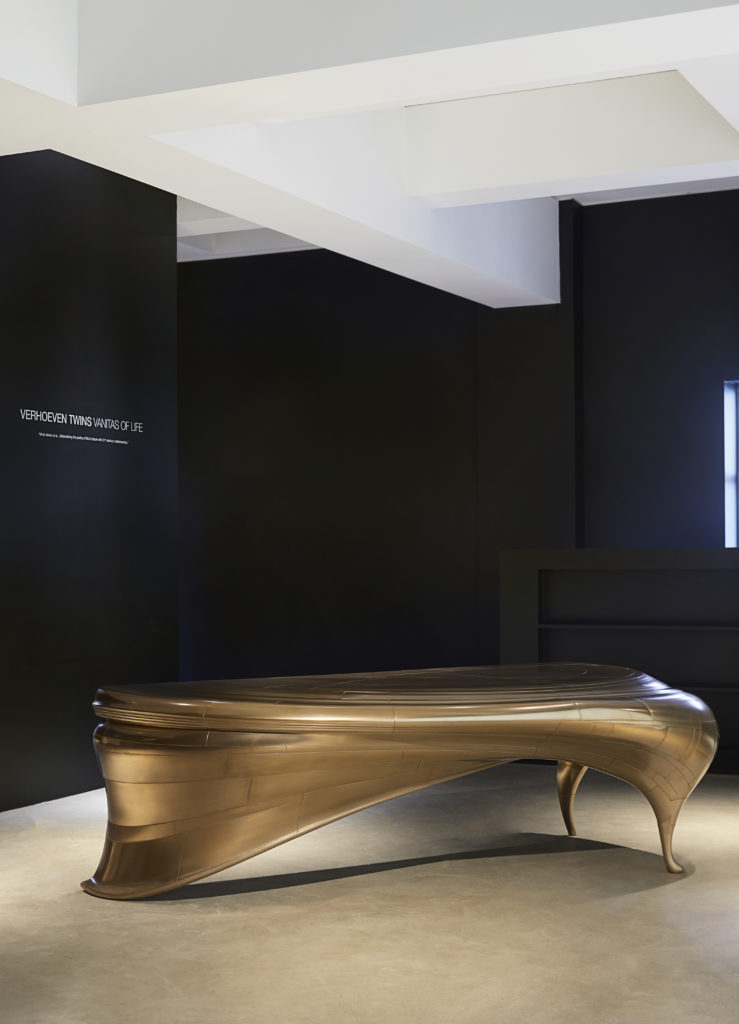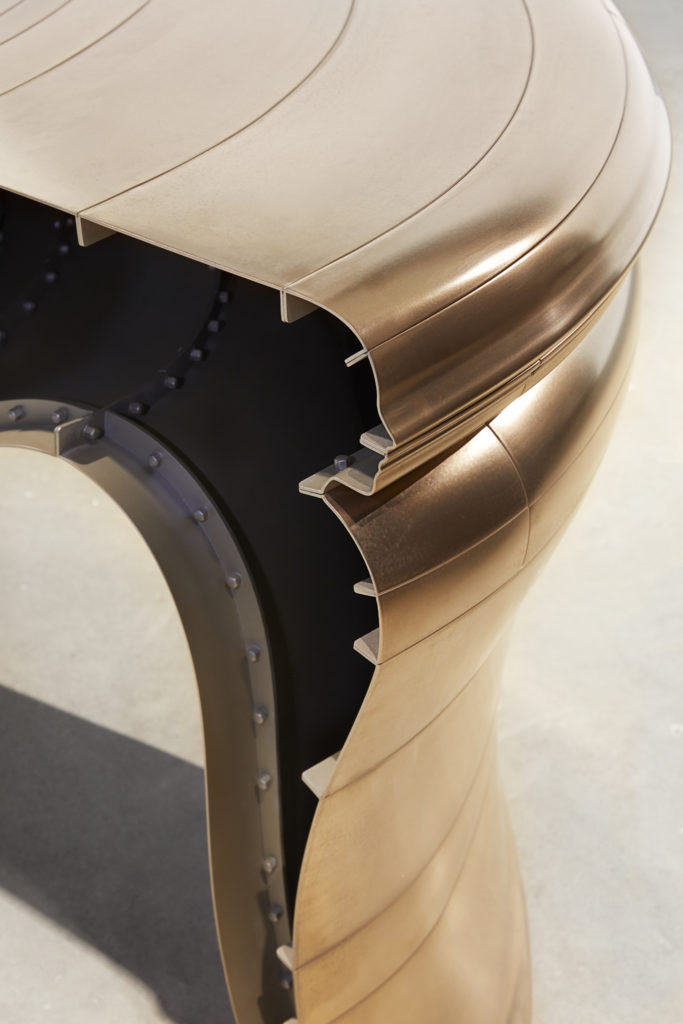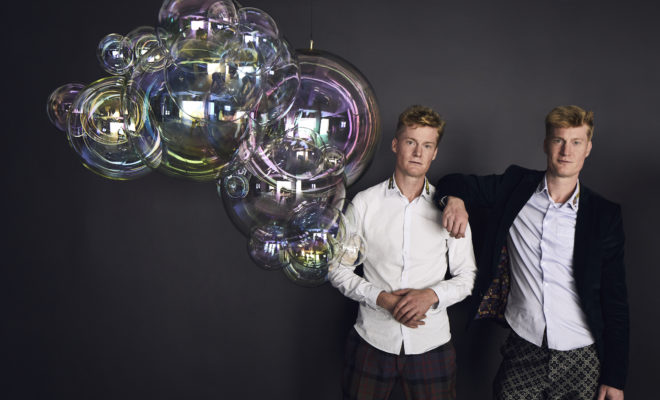 The Verhoeven twins with their piece Dreamcloud. All images by Matt Harrington Photo; Courtesy of Carpenters Workshop Gallery.
The Verhoeven twins with their piece Dreamcloud. All images by Matt Harrington Photo; Courtesy of Carpenters Workshop Gallery.
Exhibition
Verhoeven Twins Bring Vision and Verve to their Carpenters Workshop Gallery Show
An encounter with one of the Verhoeven Twins’ whimsical designs might have you wondering, “how could this possibly be made?” A table of fabric-like wood, a fractured bronze desk, and fantastical glass bubbles are the outcome of the brothers’ intricate and seemingly inexplicable design process and are now on view in the exhibition Vanitas of Life at Carpenters Workshop Gallery in New York. The Amsterdam-based designers Jeroen and Joep Verhoeven live together, work together, and have the same goal: to push modern manufacturing to its limit in order to produce pieces that create moments of joy through their enigmatic design.
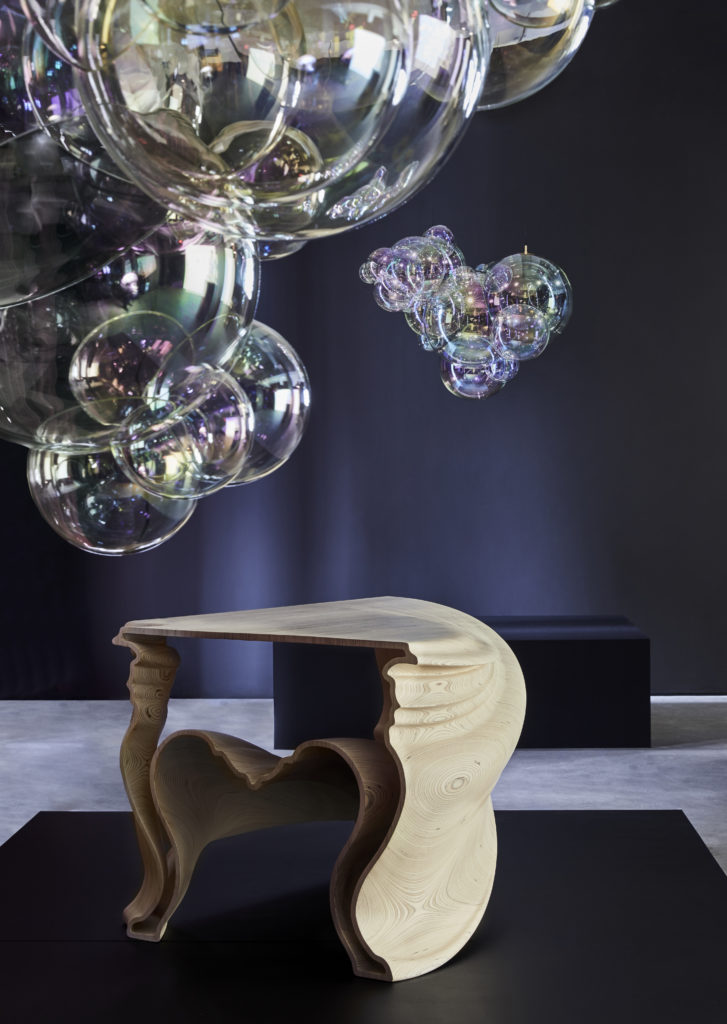
The Cinerella Table, one of a limited edition of twenty, is a part of the collection of the Museum of Modern Art, New York.
Their Cinderella table, now part of the Museum of Modern Art’s permanent collection, is so named for its element of hidden beauty—the mysterious mode of its creation. By manipulating drawings in CAD, the brothers were able to create this two-faced table, constructed of 741 layers of machine-cut plywood, glued and finished by hand. The slices flow together so seamlessly that the wood appears to be liquid. With its reference to baroque commodes, the table reveals its historic inspiration, but with a contemporary take that is a truly innovative visual experience.
The Lectori Salutatem desk, constructed from 165 pieces of bronze-coated marine steel, is one of the Twins’ most personal pieces. Drawing from the work of François Linke, who often included images of loved ones in his furniture, the brothers conceived a desk featuring portraits of Joep and Judith de Graauw, his former lover. To design it, they pushed the boundary of a machine typically used to create automotive parts, even surprising the engineers of the device itself. The bent metal is bolted together by hand and will develop a patina over time. This is an important approach for the designers who are always looking to find a balance between machine construction and handicraft. They make a point to use natural materials in their work, such as bronze and wood, so that the piece appears to be “living,” aging over time.
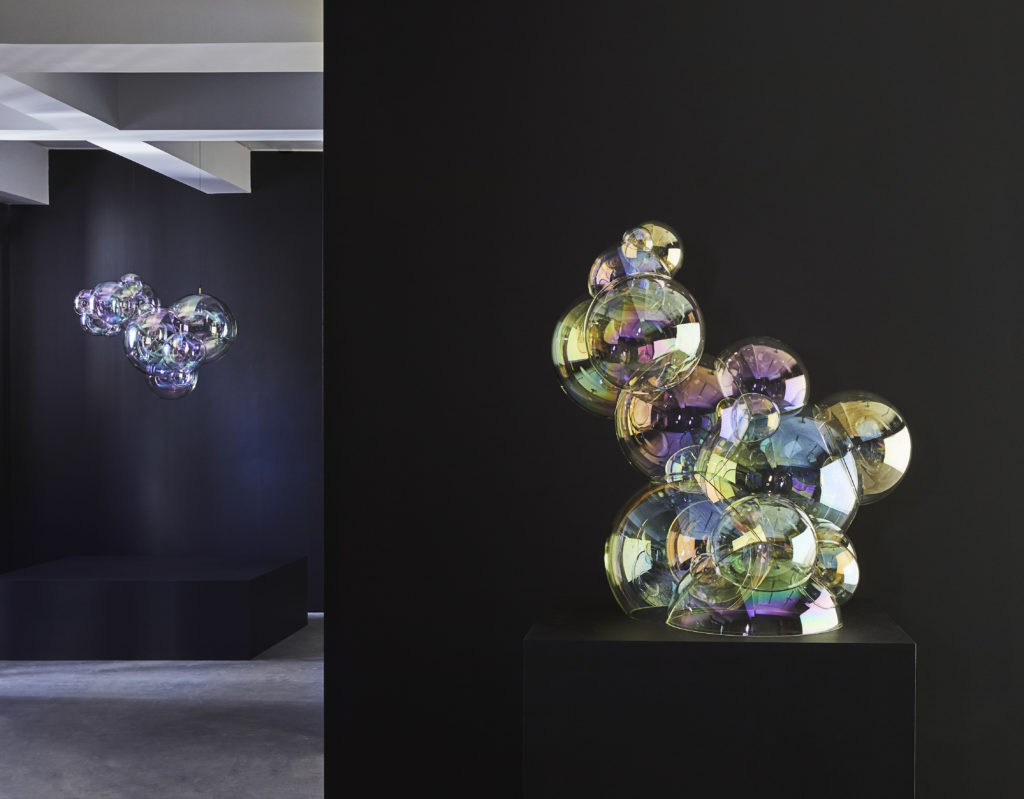
An installation view of Vanitas of Life, featuring two of the twins’ glass sculptures.
The Twins’ newest collection, Shape of Water, consists of bubble-like sculptures made from lab-grade borosilicate glass. The delicate, iridescent pieces reference bubbles in seventeenth and eighteenth-century painting—a vanitas symbol representing the tenuousness of life. In the hands of the Verhoeven Twins, however, the bubbles not only represent life’s fragility, but also celebrate the feeling of wonder you experience when coming across the pieces for the first time. The sculptures take something ordinary and make it extraordinary, and for a moment, alter your perception of reality. “If you want to have an honest response,” remarked one of the brothers, “you need to have an honest piece,” and a reaction of sheer delight is certainly earned. The functionality of much of the Verhoeven brothers’ designs are not only in their utility but also in their ability to prompt a genuine smile.
Vanitas of Life November 7 through December 22 Carpenters Workshop Gallery, New York.


